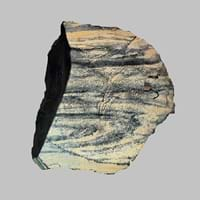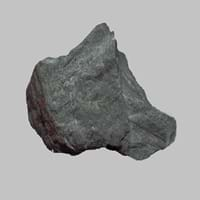Oil shale and Taconite
Definition
Definition
Oil Shale is a fine-grained sedimentary rock from which oil is extracted
Taconite is a low-grade iron ore which belongs to sedimentary rock and containing about 27% iron and 51% silica
History
Origin
Unknown
Western Australia, Minnesota
Discoverer
Unknown
Newton Horace Winchell
Etymology
From Old English scealu in its base sense of thing that divides or separate
From the name of Taconic Mountains in New England
Class
Sedimentary Rocks
Sedimentary Rocks
Sub-Class
Durable Rock, Soft Rock
Durable Rock, Medium Hardness Rock
Family
Group
Not Applicable
Not Applicable
Other Categories
Fine Grained Rock, Opaque Rock
Coarse Grained Rock, Opaque Rock
Texture
Texture
Splintery
Banded, Trellis
Color
Black, Brown, Buff, Green, Grey, Red, Yellow
Red, Reddish Brown
Maintenance
Less
Less
Durability
Durable
Durable
Water Resistant
Yes
Yes
Scratch Resistant
No
Yes
Stain Resistant
Yes
No
Wind Resistant
No
Yes
Acid Resistant
No
No
Appearance
Muddy
Layered, Banded, Veined and Shiny
Uses
Architecture
Interior Uses
Not Yet Used
Decorative Aggregates, Entryways, Flooring, Homes, Interior Decoration
Exterior Uses
Not Yet Used
As Building Stone, Garden Decoration, Paving Stone
Other Architectural Uses
Not Yet Used
Curbing
Industry
Construction Industry
Cement Manufacture, Construction Aggregate, for Road Aggregate, Serves as an Oil and Gas Reservoir rock
As Dimension Stone, Used for flooring, stair treads, borders and window sills.
Medical Industry
Not Yet Used
Not Yet Used
Antiquity Uses
Artifacts
Artifacts
Other Uses
Commercial Uses
An Oil and Gas Reservoir
As a touchstone, Cemetery Markers, Creating Artwork
Types
Types
Carbonate-rich Shale, Siliceous Shale and Cannel Shale
Not Available
Features
Easily splits into thin plates, Generally rough to touch, Is one of the oldest rock, Very fine grained rock
Is one of the oldest rock
Archaeological Significance
Monuments
Not Yet Used
Used
Famous Monuments
Not Applicable
Data Not Available
Sculpture
Not Yet Used
Used
Famous Sculptures
Not Applicable
Data Not Available
Pictographs
Not Used
Not Used
Petroglyphs
Not Used
Not Used
Figurines
Not Yet Used
Used
Fossils
Present
Present
Formation
Formation
Oil Shale forms on the beds of seas and lakes and its formation starts with the organic debris settling and accumulating at the bottom of a lake or sea which are then transformed into rock with the help of high temperature and pressure.
Taconite is a type of sedimentary rock formed when a river carries or transports pieces of broken rock as it flows. When the river reaches a lake or sea, its load of transported rocks settles or deposits at the bottom of sea or lake.
Composition
Mineral Content
Albite, Biotite, Calcite, Chert, Chlorite, Dolomite, Hematite, Micas, Muscovite or Illite, Pyrite, Quartz, Silica, Sulfides
Hematite, Magnetite, Quartz
Compound Content
Ca, Fe, Mg, Silicon Dioxide, Sodium
Fe, Iron(III) Oxide, Silicon Dioxide
Transformation
Metamorphism
No
No
Types of Metamorphism
Not Applicable
Not Applicable
Weathering
Yes
Yes
Types of Weathering
Biological Weathering, Chemical Weathering, Mechanical Weathering
Biological Weathering, Mechanical Weathering
Erosion
Yes
Yes
Types of Erosion
Chemical Erosion, Sea Erosion, Water Erosion
Chemical Erosion, Coastal Erosion, Glacier Erosion, Water Erosion, Wind Erosion
Properties
Physical Properties
Hardness
2-3
5.5-6
Grain Size
Very fine-grained
Large and Coarse Grained
Fracture
Not Available
Uneven, Splintery or Conchoidal
Streak
White
White
Porosity
Highly Porous
Highly Porous
Luster
Dull
Earthy
Cleavage
Slaty
Imperfect
Toughness
2.6
1.5
Specific Gravity
2.2-2.8
5-5.3
Transparency
Opaque
Translucent to Opaque
Density
2.4-2.8 g/cm3
Not Available
Thermal Properties
Specific Heat Capacity
0.39 kJ/Kg K
23
3.20 kJ/Kg K
1
Resistance
Heat Resistant, Impact Resistant
Heat Resistant, Impact Resistant, Pressure Resistant, Wear Resistant
Reserves
Deposits in Eastern Continents
Asia
Bangladesh, China, India, Israel, Jordan, Russia, Syria, Thailand, Turkey
China, India, Iran, Iraq, Oman, Russia, Saudi Arabia, Taiwan, Thailand, Vietnam
Africa
Ethiopia, Kenya, Morocco, South Africa, Tanzania
Kenya, Morocco, South Africa, Tanzania
Europe
Austria, France, Germany, Greece, Italy, Romania, Scotland, Spain, Sweden, Switzerland
Austria, France, Greece, Italy, Malta, Poland, Portugal, Serbia, Spain, Sweden, United Kingdom
Others
Greenland, Not Yet Found
Greenland, Mid-Atlantic Ridge
Deposits in Western Continents
North America
Canada, USA
Canada, Mexico, USA
South America
Bolivia, Brazil, Chile, Colombia, Ecuador, Peru, Venezuela
Bolivia, Brazil
Deposits in Oceania Continent
Australia
New South Wales, New Zealand, Queensland, Victoria, Western Australia
New South Wales, Queensland, South Australia, Western Australia
All about Oil shale and Taconite Properties
Know all about Oil shale and Taconite properties here. All properties of rocks are important as they define the type of rock and its application. Oil shale and Taconite belong to Sedimentary Rocks.Texture of Oil shale is Splintery whereas that of Taconite is Banded, Trellis. Oil shale appears Muddy and Taconite appears Layered, Banded, Veined and Shiny. The luster of Oil shale is dull while that of Taconite is earthy. Oil shale is available in black, brown, buff, green, grey, red, yellow colors whereas Taconite is available in red, reddish brown colors. The commercial uses of Oil shale are an oil and gas reservoir and that of Taconite are as a touchstone, cemetery markers, creating artwork.
|
||
|
||
|










